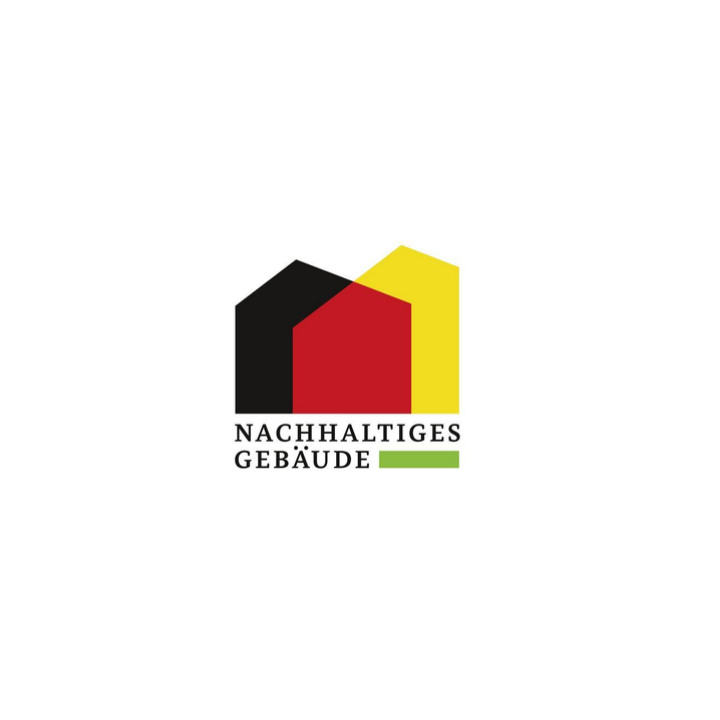Quality Seal for Sustainable Buildings (QNG): Criteria
The Sustainable Building Quality Seal is awarded by accredited certification bodies such as the DGNB or NaWoh as part of the building certification process. The requirements that the QNG places on buildings are therefore also anchored in the assessment systems of these providers. In principle, an assessment system must take into account basic requirements in the following areas in order to be registered for the award of the QNG:
- Comfort and functionality: fulfillment of user requirements, thermal comfort, visual comfort, sound insulation, accessibility.
- Resource consumption and environmental impact: Land use, resource use, deconstruction and recyclability, targeted selection of building products to reduce health impacts, drinking water requirements.
- Efficiency, costs and long-term value stability: flexibility, adaptability to changing user requirements, space efficiency, prerequisites for optimum use of the building in operation.
A prerequisite for obtaining the quality seal is the fulfillment of various general requirements in the above-mentioned areas, which are usually also reflected in the evaluation criteria of the registered systems. In addition, there are a number of special requirements in which there is a high level of public interest and to which special attention is therefore paid. These special QNG requirements may have to be fulfilled in addition to the requirements of the registered assessment schemes.
General QNG requirements
- socio-cultural and functional quality: focus on the user’s requirements, comfort and ease of use.
- economic quality: focus on life cycle costs, value stability and adaptability.
- Ecological quality: focus on the environmental impact, use of resources and building materials used.
- Technical quality: focus on the quality of the building envelope, ease of dismantling and recycling.
- Process quality: Focus on the requirements for planning, construction and preparation of the operating phase.
Special requirements for residential and non-residential buildings
Socio-cultural aspects/social quality:
- Avoidance of harmful substances in building materials: binding material declaration of defined product groups and material evaluation by a sustainability expert.
- Accessibility of the building: structurally adaptable design for usability for all age groups, implementation of various structural and spatial measures for age-appropriate living space.
Ecological aspects/ ecological quality:
Responsible use of resources and sustainable material extraction:
- Material extraction and processing must comply with recognized ecological standards. Wood (materials) from uncontrolled extraction must be excluded. The origin of wood, processing chains and intermediaries must be verifiably documented up to the final processing company.
Limiting greenhouse gas emissions and primary energy requirements in the life cycle in the interests of climate protection:
- fixed requirement values for GHG emissions in the life cycle, decision on appropriate construction method and building services solution lies with those involved in planning.
Additional special requirements for non-residential buildings
- Natural hazards at the site: Analysis and assessment of the current and future risk to the building at the site from selected natural hazards (winter storms, hail, heat, heavy rain, lightning, snow load, flooding, radon). Implementation and documentation of technical and structural measures on the building or the outdoor facilities near the building, risk management measures in the context of building operation.
- Green roof: Analysis of green roof suitability and determination of green roof area potential and corresponding use of the areas or parts thereof.
Different strict requirements apply to QNG-Plus and QNG-Premium.
The QNG award
A building receives the QNG award (originally sustainability class = NH class) by
- fulfills the special QNG requirements,
- a recognized sustainability certificate such as DGNB, NaWoh, BNB, BNK or similar,
AND
- complies with the maximum efficiency house values for primary energy demand and transmission heat loss (defined in the Building Energy Act).
Special QNG requirements + sustainability certificate + efficiency house = QNG
The legally permissible annual primary energy requirement for new buildings is currently 55% (EH 55) of the reference building (GEG 2023). For the BEG subsidy, however, the requirement may not exceed 40% (EH 40). In addition, lower U-values must be achieved for the building envelope in order to meet the requirements for the subsidy. You can find out more about the Sustainable Building Quality Seal on the information page of the Federal Ministry of Housing, Urban Development and Building.
Phone +49 711 62049-340 Email info@hoinka.com


